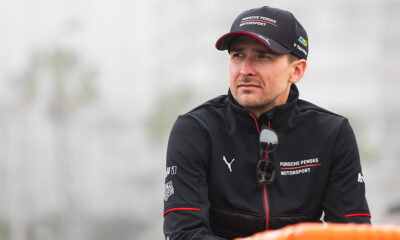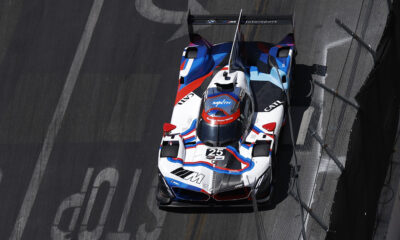
Photo: John Dagys
John Doonan says he’s been involved in DPi and Hypercar convergence discussions with the ACO from “day 2” of his job as IMSA’s new president, having expressed “sincere interest” to find common platforms for the future.
The former Mazda Motorsports director, who has succeeded Scott Atherton, began a transitionary role with the sanctioning body in late October prior to his official first day on Jan. 1.
With dialogue ramping up between IMSA and the ACO on a potential convergence strategy in recent months, Doonan said “time will tell” if an agreement will be reached that would see Le Mans Hypercars and next-generation DPis racing together.
“Being 60 or 90 days ago in the seat of representing a manufacturer, I was part of a lot of the working groups and discussions about where powertrain and propulsion strategies and platforms are headed, not only for the OEM I represented, but for all of the others,” Doonan said.
“I’d say it was day 2 when Scott [Atherton] and Ed [Bennett, IMSA CEO] and Mr. France involved me with discussions with our tremendous partners from the ACO.
“There’s a lot of interest and discussions among everybody involved, from manufacturers to all of the sanctioning bodies, to work together to make sure this sport, our collective sport, continues to grow.
“There is sincere interest in finding common platforms that can allow manufacturers, drivers, all the best in the world, to compete under a similar set of regulations.”
When asked by Sportscar365 on the feasibility of a convergence, Doonan indicated that manufacturers from the FIA World Endurance Championship, as well as current DPi manufacturers, have both already made considerable investments to the already confirmed platforms.
“The folks at Toyota have made a massive investment. Aston Martin is committed, Peugeot is committed to the Hypercar platform,” Doonan said.
“We’ve got our three primary investors over here.
“Time will tell. I’m excited for the potential but there’s a lot of things that have to happen before.”
Doonan stressed that cost containment, which has been IMSA chairman Jim France’s main focal point, is a key factor in the discussion process as well.
“The other thing that Jim has said, and what I like and have been out trying to understand in these meetings with OEM partners, not just DPi, but what is your product cycle plan and powertrain plan?
“Because it’s evolving and changing constantly.
“You’re seeing these ride-share programs all of a sudden go away and seeing discussions about hybrid that’s now [a] old hat [and] electrification is now the key.
“You’re hearing from my previous manufacturer that there’s so much left in the internal combustion engine that we can make more efficient, we’ve got a ways to go there.
“It’s trying to get everybody into a place where we can do something that’s common that helps everyone tell a story without painting ourselves too deep into a box and allowing any regulations to allow costs to go through the ceiling.”
No Decision on Spec Hybrid Supplier
Doonan said a decision has not yet been made on the spec hybrid powertrain that had been put up for tender for the so-called DPi 2022 regulations.
“The technical team has brought all of the costs forward,” he said. “I think that’s the hard part.
“We did an RFP to hybrid providers.
“Now we can work with real costs and talk to those who have put their money where their mouth is and invested and are currently running with us if that’s the direction they think that will allow to tell their particular brand story the best.”
While still remaining the goal, Doonan wouldn’t necessarily confirm that the DPi 2022 regs, in draft form, would be finalized in the first quarter of this year, as outlined by Atherton during last year’s ‘State of the Series’ address.
“I don’t know if we can get to a set of regulations before the Rolex [24] or Sebring,” Doonan said. “But Q1 is three months long so we’ll see if we can get it done between now and the end of March.”
























